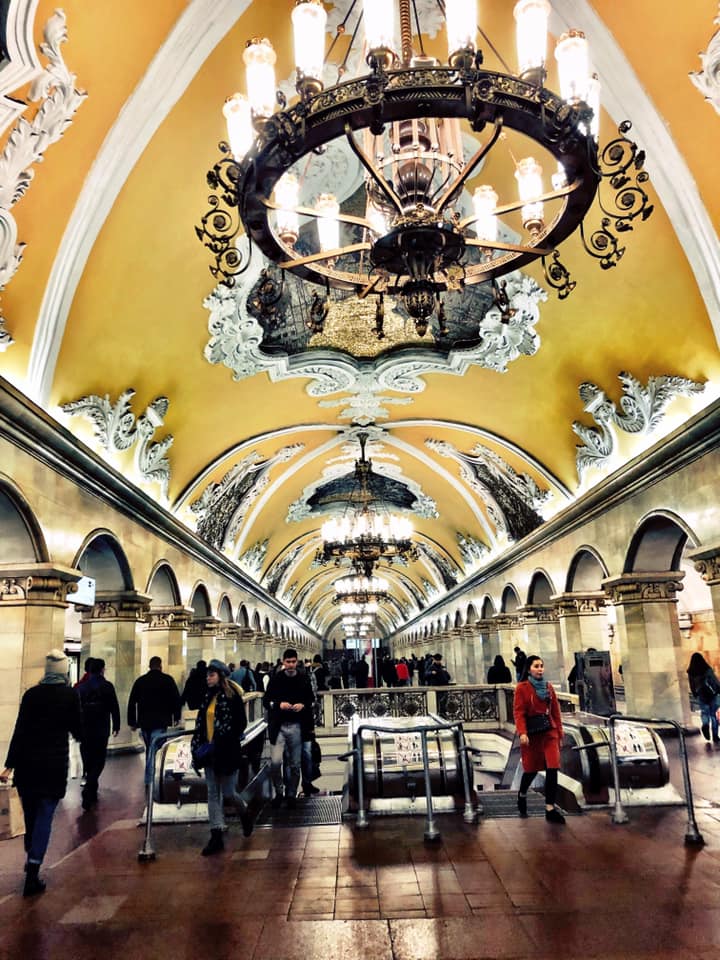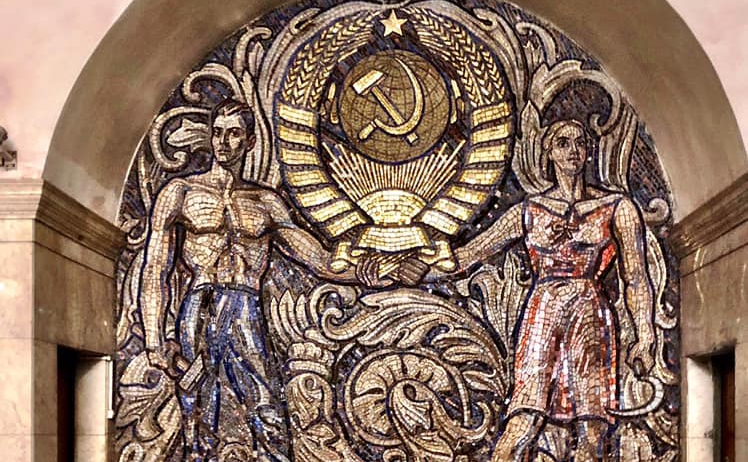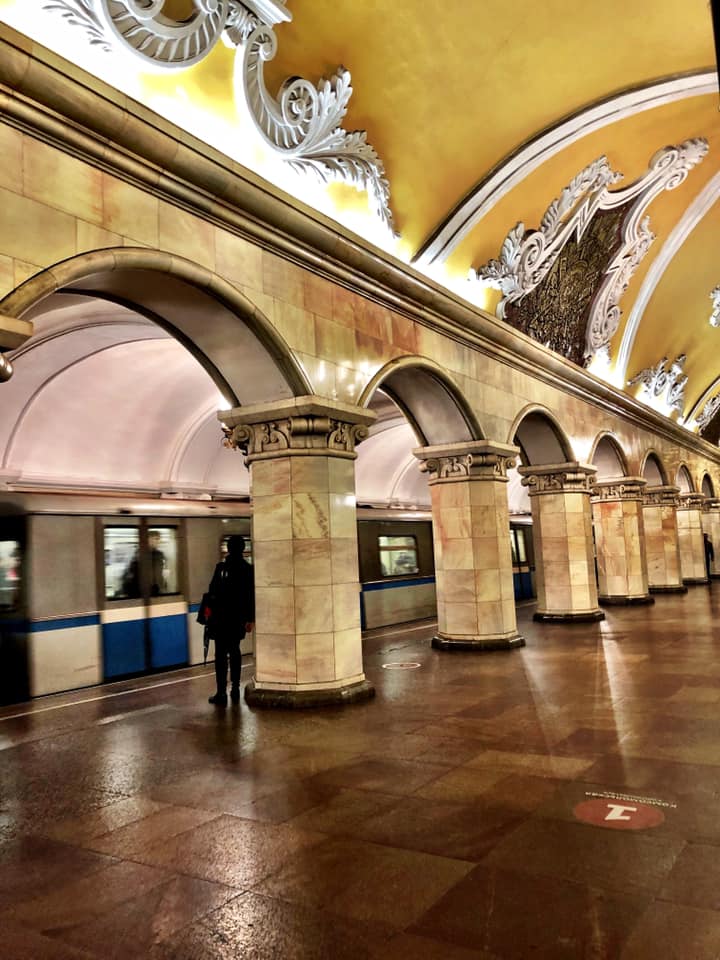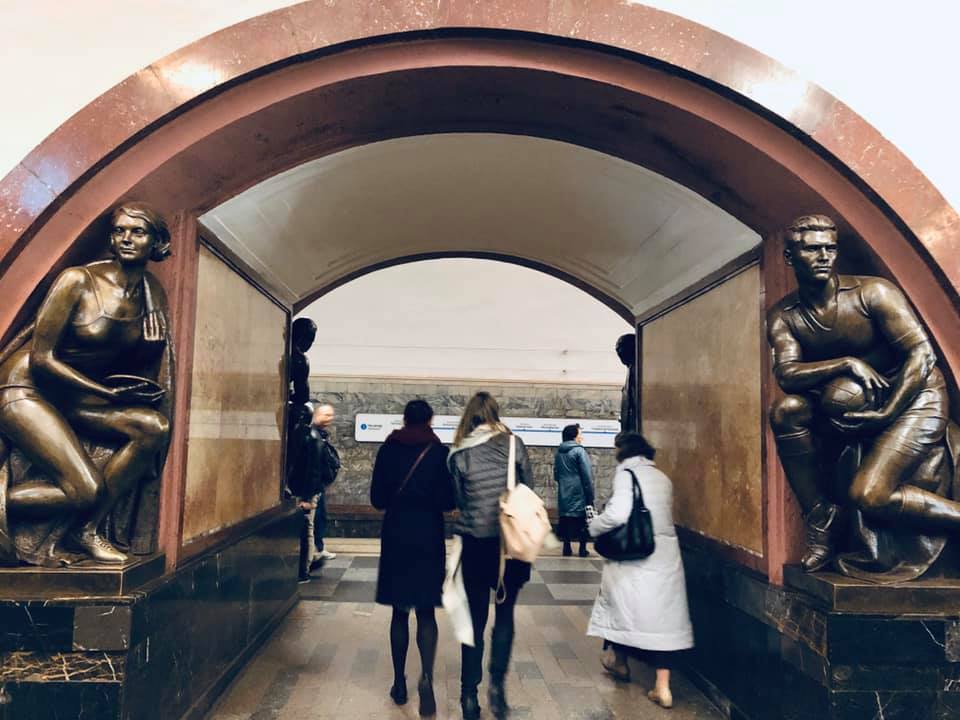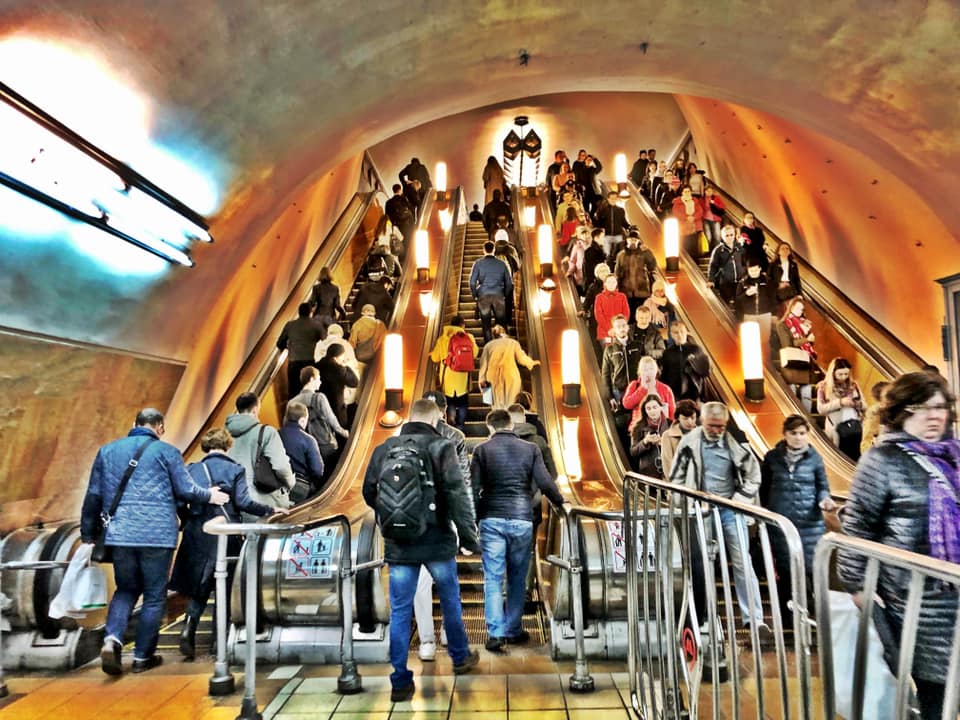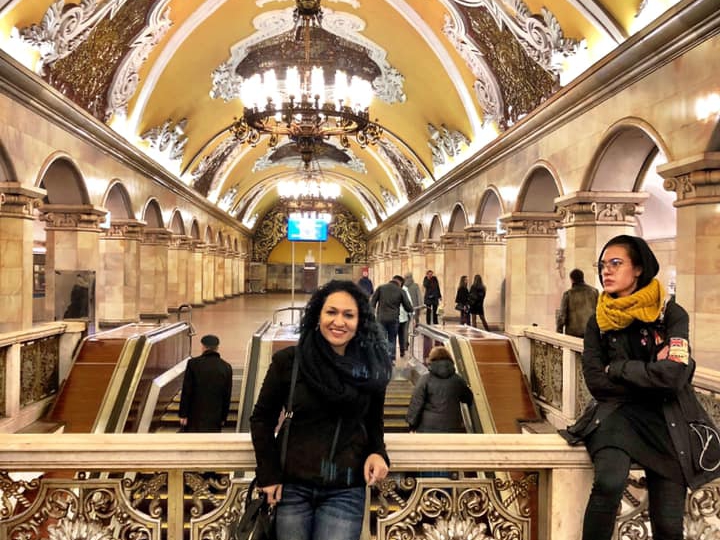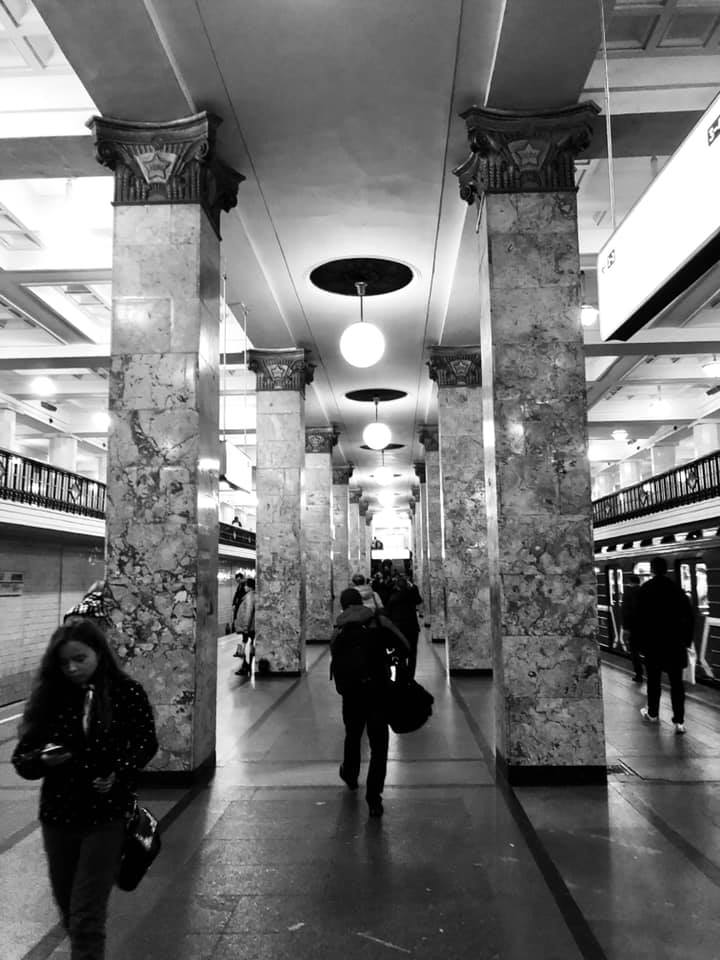During a recent business trip to Moscow, my very first time, it wasn’t the Red Square or the onion-domed churches that I most looked forward to. It was the Moscow Metro! All it took was one evening and a cheap subway ticket.
The Moscow Metro is one of the busiest public transport systems in the world connecting 200 stations and moving an average of 9 million commuters a day. Some stations run so deep, the escalator ride feels like you are descending into another dimension. The stations range in depth from 16 to 260 feet and the entire metro system collectively has more than 40 miles of escalators.
Moscow’s metro system is more than just a means of transportation. It is an insight into Russia’s Soviet history. The intricate network of tunnels deep under the ground are a feat of engineering blended with a masterpiece of art and architecture. As I entered my first metro station of Pushkinskaya, named after the Father of modern Russian Literature, Alexander Pushkin, I felt like Alice who just stumbled through the looking-glass into Wonderland!
More than 80 years of history and architectural beauty unfold with each stop on the metro line. Soviet mosaic decorations, grand halls with chandeliers, colourful paintings on ceilings, marble and granite carvings, rich detailed bas-reliefs, stained glass windows, and majestic statues are just some of the wonders that await the curious commuter. You could be forgiven for thinking you have entered a museum or a ballroom.
The Moscow Metro first opened in 1935, making it one of the oldest metro systems in the world. It was a brainchild of the Tsars in early 1900s but finally put into action by Stalin. During the Soviet era, the metro system was seen as a triumph of socialism. Many of the early stations were built in the style of socialist realism with grand sculptures dedicated to the workers. It was the USSR’s most extravagant architectural project, and the government spent billions to construct these luxurious “palaces for the people”. Stalin wanted it to serve as an advertisement of the Soviet workers’ paradise.
Russia’s glorious architectural movement came to an end in 1955 after the Communist Party issued a decree eliminating extravagance in design and construction. After Stalin's death in 1953 and the subsequent process of “destalinisation” in Russia, his images were gradually removed from the Moscow Metro. So, despite the key role he played in developing this underground wonderland, he rarely makes an appearance anymore on its walls.
If you get the opportunity to visit Moscow, a visit to these stunning underground museums is a must. The entrance fee is barely a dollar!
My Top 5 Recommended Stations to Visit
Komsomolskaya
This station represents the high point of the Stalinist Empire style, with elegant bronze chandeliers, marble arcades and monumental mosaics made from smalt.
Novoslobodskaya
32 stained-glass panels adorn this stunning cathedral-like church. In fact, it is believed the architects were terrified that the station would resemble a Catholic church. However, Muscovites think it resembles an underwater world!
Dostoyevskaya
Named after Russian novelist and philosopher Fyodor Dostoyevsky, this station displays striking murals depicting scenes from Dostoyevsky’s most famous works such as Crime and Punishment and The Idiot.
Mayakovskaya
Considered the jewel of the Moscow Metro crown, this station is an art deco masterpiece. In 1941, to celebrate the anniversary of the Bolshevik revolution, Stalin entertained and dined guests in this station, all whilst the Nazi's bombed the city.
Kievskaya
This station opened in 1954 in honour of the friendship between Russia and Ukraine, and named after the Ukrainian capital, Kiev. (Oh, how times have changed!) Ornate marble and granite decorations and beautiful mosaic panels are resplendent throughout this station. Apparently, this was constructed under the personal supervision of Nikita Khrushchev, who after the station opened, declared the ban on excess.

